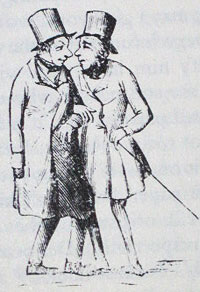The Concept of Byrony
DOI:
https://doi.org/10.5399/uo/konturen.7.0.3658Abstract
“The Concept of Byrony” examines Kierkegaard’s lyrical relation to Lord Byron. As an alternative to models of German influence, this paper discusses Kierkegaard’s quotations of Byron’s poetry and allusions to the poet himself. The paper establishes a poetical relationship between the two writers in terms of irony and metaphor. Kierkegaard’s sense of irony is creative but not unique; its roots can be located in earlier writings of the Danish Golden Age. Of particular importance is the development of irony in the works of Johan Ludvig Heiberg and the young writers that surrounded him, including the young Kierkegaard himself. It was in Heiberg’s salon where Byron seems to have first stepped into the Danish literary landscape. For Kierkegaard and Danish letters in general, the reception and celebrity-status of Byron perhaps play a more important role than his verse, although another acolyte of Heiberg’s, Frederik Paludan-Müller, wrote poetry that strongly illustrates Byron’s poetical influence in Danish verse. The paper also examines the Byronic notion of the empty sign, a metaphor that points to its own meaninglessness as a further poetic relationship. Moreover, the Byronic hero as a model for a lived life provided Kierkegaard with a powerful public mask that accompanied him to his last days. I term this mask and masquerade Byrony. In its conclusion the paper marks a significant similarity between the death-scenes and epitaphs of these major nineteenth-century European writers.Published
2015-08-23
How to Cite
Gurley, D. G. (2015). The Concept of Byrony. Konturen, 7, 14–39. https://doi.org/10.5399/uo/konturen.7.0.3658
Issue
Section
Articles

